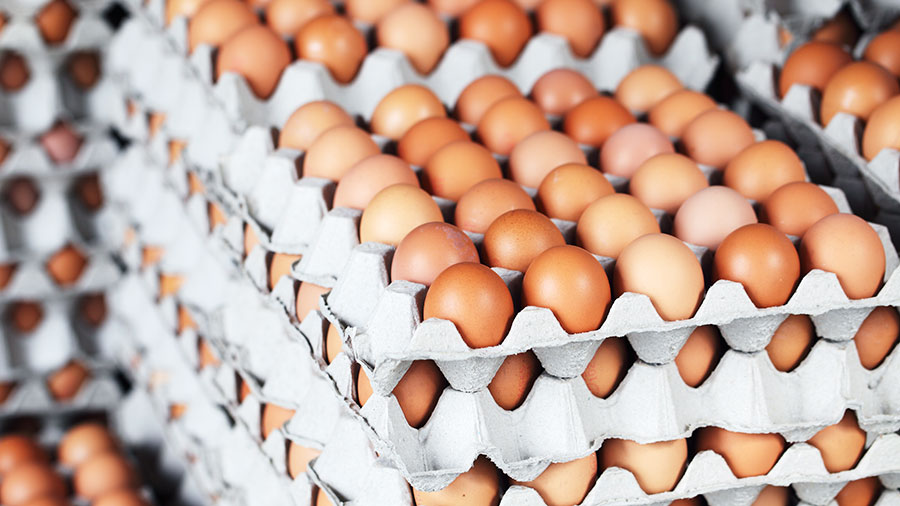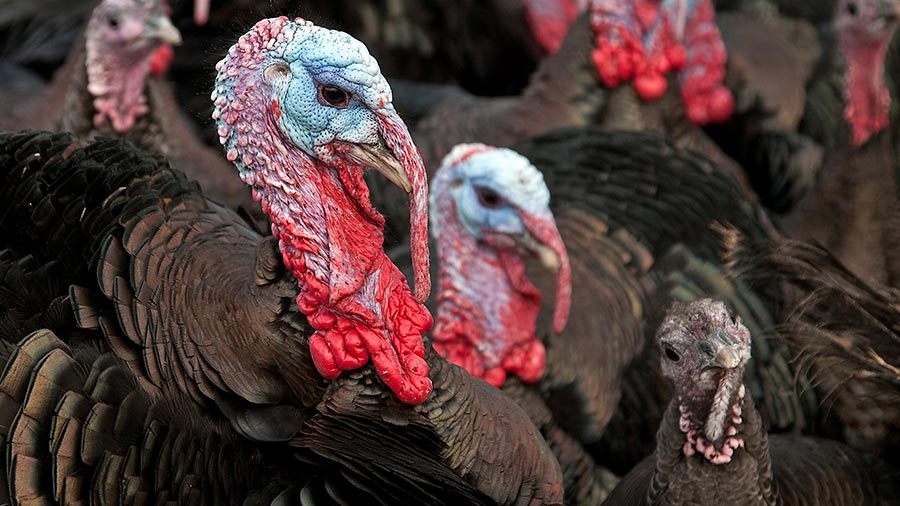Outlook 2021: Poultry market risks and opportunities
 © AdobeStock
© AdobeStock The pandemic has created mixed outcomes for the poultry industry. While egg producers saw a rise in demand, which helped offset increased costs, broiler farmers were hit by reduced access to processing facilities.
Elsewhere, travel restrictions should present a bigger Christmas market to capitalise on, though turkey farmers have struggled to secure migrant labour due to quarantine rules.
We look back at the year so far and offer some expert pointers to help farmers identify the risks and opportunities ahead in egg production, broilers and turkeys.
See also: Avian influenza prevention tips and how to handle an outbreak
Egg production
Free-range egg producers have enjoyed a fair year, with strong demand buoying prices in 2020 and a positive outlook ahead.
One silver lining to the Covid pandemic has been the increase in homeworking, which – combined with The Great British Bake Off television series – means retail egg sales have soared.
According to Kantar Worldpanel, free-range egg sales increased by nearly 22% in the 12 weeks to 4 October, to more than 1.2bn eggs.
The extra demand is reflected in Defra data, which shows that average free-range egg prices have jumped from about 80p/doz a year ago to over 91p/doz now.
However, costs of production have also increased, to around 85p-95p/doz, meaning margins have not seen such a significant improvement.
Over the same period, enriched colony prices have increased from about 53p/doz to over 58p/doz, against a 45p-55p/doz cost of production.
“The cage-free by 2025 commitment made by the retailers looms ever larger, and there are big concerns that perhaps they have bitten off more than they can chew,” says Andersons partner Lily Hiscock.
Free-range currently represents 52% of total egg-packing station throughput, and 68% of the retail sector.
“If consumption remains unchanged, to increase total free-range production to 65% (assuming some increases in barn and organic production) by 2025 would require more than 4 million extra birds,” she adds.
That would mean an extra 16,000-bird unit coming online every week.
“With planning permission for new sites remaining challenging and avian influenza discouraging single-site growth, this target looks nigh-on impossible,” says Miss Hiscock.
In the short term, this is likely to result in strong demand and prices. Brexit will only exacerbate the tight market, with potentially reduced imports, particularly for liquid egg.
Perhaps there are a few golden years that free-range producers should look to capitalise on, ready for more difficult times to come.
Those “difficult times” could be the result of turning free-range eggs from a premium offering into a commodity.
Commodities tend to decline in value over time and this downward pressure will almost certainly be passed down to producers.
It seems unlikely that any other form of production will fill the “value-egg” sector once enriched colonies are removed.
Some retailers are looking to barn eggs by converting colony sheds.
However, most enriched colony producers are still paying off investment from 2012 and, with barns requiring a 30-40% lower stocking density, the new investment does not look appetising or economically viable at over £18 a bird to convert these sheds.
Barn eggs also only cost 5p-10p/doz less to produce than free-range eggs – compared with a 20p/doz gap with colony eggs – so don’t offer a significant price reduction.
They are therefore only likely to comprise about 10% of the market by 2025.
So what happens to the premium end of the market? Miss Hiscock predicts a two-tier free-range sector – standard and differentiated.
“This is perhaps where the opportunity lies – tapping into the growing culture for high-welfare, environmental credentials, foodie culture and home cooking.”
Advice for egg producers
Short-term pointers:
• Obtain contracts with stable pricing across the board (XL to seconds)
• Work with packers to develop “differentiated” shell eggs and time peak lay to meet demands
• Focus on efficiency and high quality – fast turnaround times, reduced antibiotic usage, minimal seconds.
Long-term pointers:
• Decide whether to focus on being a highly efficient commodity producer
• Or switch to targeting a premium market.
Broilers

© AdobeStock
In contrast to the egg sector, broiler producers have had a challenging year. Covid-19 made it difficult to source wood shavings for bedding and dust masks for farm staff.
The forced closure of some processing factories meant some birds had to be culled on farm.
Factories will hopefully be allowed to operate on a skeleton crew rather than shutting down in any future Covid outbreaks.
But some processors may also reduce farm placings by 10% if the pandemic continues, to create spare processing, allowing birds to be diverted to other factories if required.
“This makes factory communication nearing clearout time even more important. Turnaround periods may be reduced, so planning with subcontractors for cleaning and bedding is vital,” says Ms Hiscock.
Producers should also check their insurance cover for factory closures. Disposal for on-site culled birds is in the region of £100/kg, and a huge risk.
“We are potentially in for a volatile year, so anywhere producers can get security in place – by fixing feed prices, vet and med costs, and contracts – will be a good thing.”
Free-range and organic chicken are experiencing firm demand, with homeworkers looking for quality, high-welfare options during lockdown.
Butchers and farm shops should continue to do well with these ranges. Looking further ahead, the row over chlorinated chicken imports from the US continues.
But Andersons does not foresee large shipments, given the commitment of several large UK retailers to only sell chicken produced to UK standards.
“The need to shout about the quality of British chicken to the country’s population has never been higher.”
Advice for broiler producers
- Due to Covid-19 ensure effective communication with factories nearing clearout time to ensure there is capacity
-
Turnaround periods may be reduced, so work closely with subcontractors to ensure cleaning is carried out, and bedding is in place, in the required timeframes
- Fix feed prices, contracts, vet and med costs to help reduce the impact of price volatility
- Consider added-value diversifications and marketing to promote British quality product.
Turkeys

© AdobeStock
Covid-19 has been a big concern for turkey producers this year, with difficulties around access to seasonal migrant labour for processing work. EU workers have had to quarantine for two weeks before work.
“There must be efforts to recruit UK labour to reduce the cost of paying migrant staff to isolate,” says Miss Hiscock.
Given Covid-19 restrictions, Christmas sales of large turkeys may be difficult, and there is little producers can do to reduce growth rates without affecting eating quality.
Producers need to spread the word about leftover recipes.
That said, there will be an estimated 4.6m more people in the country for Christmas due to travel restrictions – these may be from the affluent proportion of the population.
“Good marketing is key; small producers need to tell the story behind their turkeys to give their product identity, something larger retailers cannot do.”
Information in this article was drawn from the annual Outlook 2021 report compiled by farm business consultancy Andersons.
